Firefighting crews held the line as wildfire threatened Mount Wilson; an amateur observatory built by the Tri-Valley Stargazers was not so lucky.
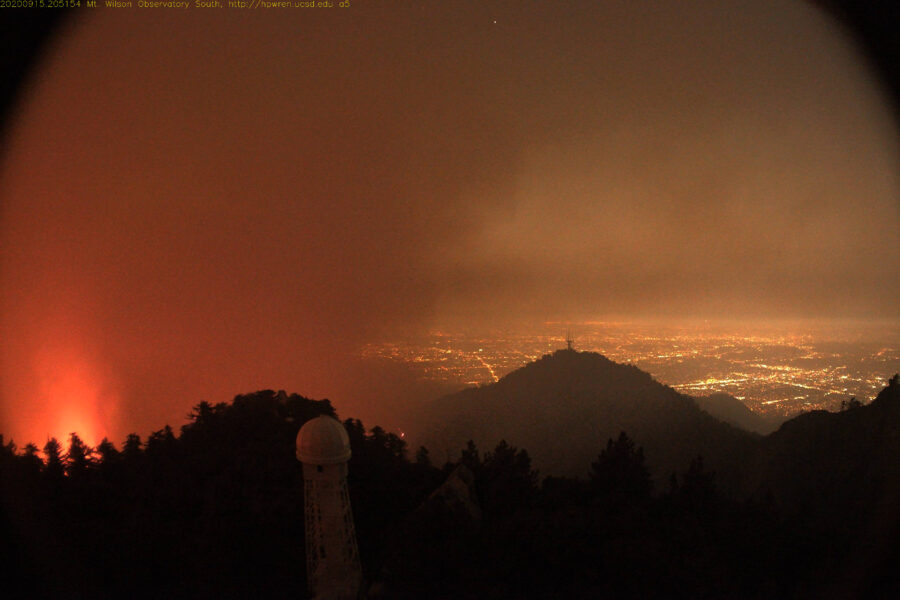
HPWREN / Mount Wilson Observatory
Another California observatory survived near-catastrophe this week, as the massive Bobcat wildfire bore down on the historic Mount Wilson Observatory northeast of Los Angeles. Also at risk were local radio and television transmission towers, worth $1 billion and located on the 5,700-foot peak.
The Bobcat Fire is just one of several scorching the U.S. West Coast in 2020, resulting in record destruction and turning the skies an unearthly reddish hue. The Bobcat Fire started on September 6th in the Angeles National Forest outside of Los Angeles.
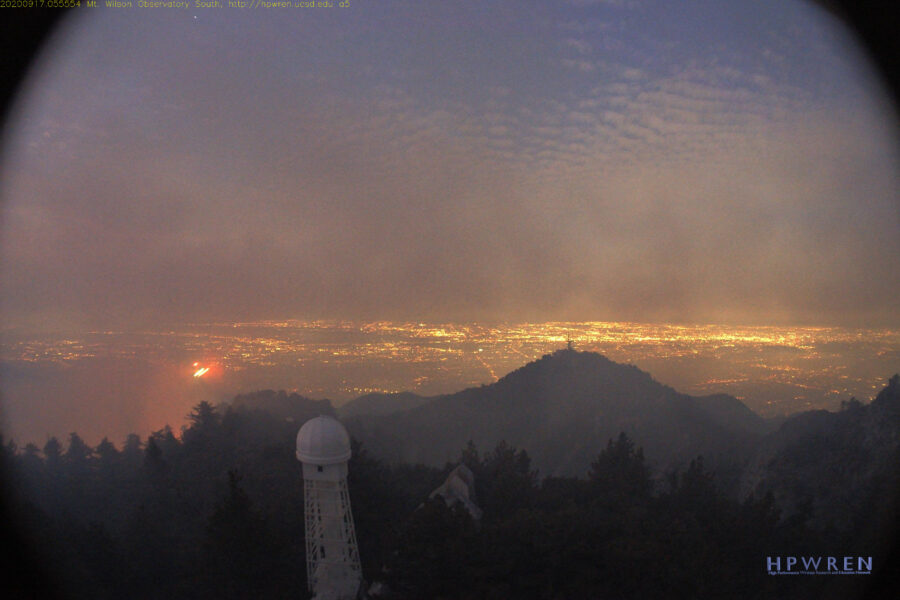
HPWREN / Mount Wilson Observatory
There were some tense moments on the afternoon of Tuesday, September 15th, as the Bobcat Fire approached within 500 feet of the observatory complex. The battle was on after a 500–1,000 acre spot fire jumped Highway 2 in the Angeles National Forest. Fire crews rallied, cutting fire lines while aircraft flew fire suppression sorties overhead to defend the observatory. By Tuesday night, the worst had passed, though officials stressed that the effort was far from over.
“While there is much to be done in the southwest and in the northern sections of the fire, your firefighters did incredible work around Mt. Wilson today,” says the Angeles National Forest @Angeles_NF official account on Twitter.
Heroes don’t wear capes. They wear personal protection equipment (PPE). Firefighters from @MonroviaCA posing in front of the 60-inch telescope. Thank you for all you do!! #BobcatFire pic.twitter.com/IIEYhZoIHU
— Mount Wilson Observatory (@MtWilsonObs) September 16, 2020
As of the evening of September 16th, the Bobcat Fire had burned over 46,000 acres, and was at 3% containment. Evacuation orders were also lifted for Arcadia and the Sierra Madre late on Wednesday evening.
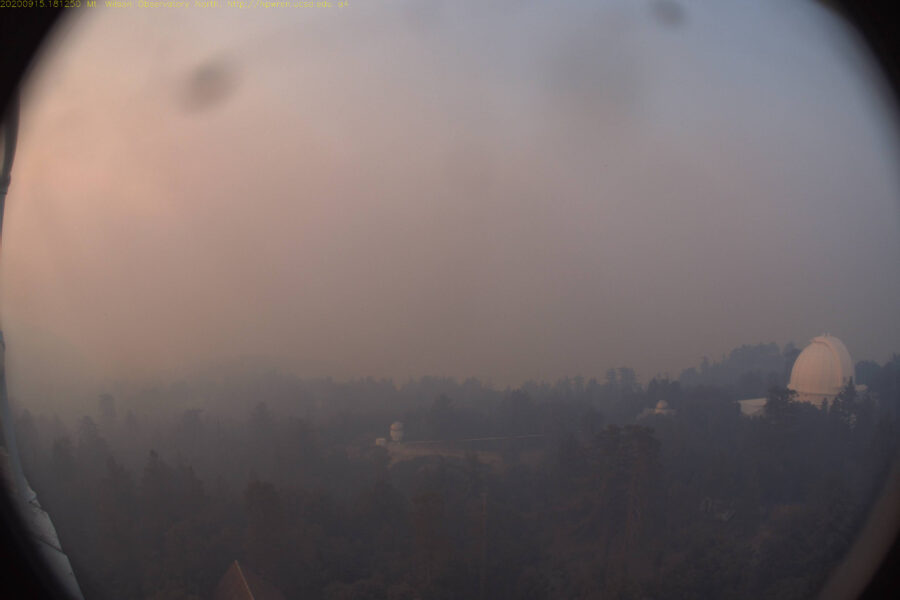
HPWREN / Mount Wilson Observatory
Founded in 1904 by astronomer George Ellery Hale, Mount Wilson is home to a 60-inch telescope and the 100-inch Hooker reflector. As the largest operational telescopes of the early 20th century, they were instrumental to discoveries such as the existence of galaxies outside our own and the expansion of the universe. During the day, solar observers at Mount Wilson have made a full disk sketch of the Sun and current sunspot activity nearly every clear day since 1917. The observatory is also home to the CHARA interferometer array, which finished construction in 2003, and has imaged stars' surfaces as well as the diameter of an exoplanet.
The 2020 fire season has been an especially severe one, fueled by a record heatwave plus the Santa Ana and Diablo winds, and it's far from over: The fire season typically peaks in late September through October. The Lick Observatory outside of the San Francisco Bay Area narrowly escaped destruction in late August.
The Mount Wilson observatory complex survived a similar wildfire in 2009 and upgraded its fire suppression system afterward, including a high-pressure fire hydrants and a 500,000-gallon water tank.
Tri-Valley Stargazers Observatory Destroyed
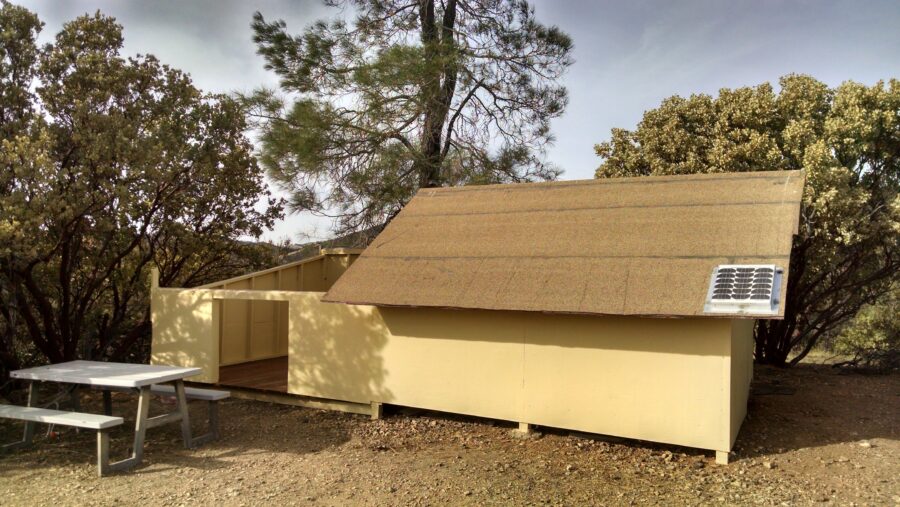
Rich Combs
The Tri-Valley Stargazers, an astronomy club in Livermore, California, lost their main observatory building to the same historic Santa Clara Unit Lightning Complex wildfires that came so close to Lick Observatory a few weeks ago.
A few of the club’s founding members had leased the property in the early 1980s; by 1983, they had constructed an observatory and donated it to the club. Another one of the club’s founding members built the observatory’s first telescope, a 17.5-inch Coulter, and its mount. Later in 1999, another member built a fiberglass Home-Dome and donated it to the club, along with a 16-inch Meade telescope in 2007.
Originally the site was named the Sky Shack, but in 1998 the club voted to rename it the Hidden Hill Observatory, or H2O. Over its almost 40 years of service, the Tri-Valley Stargazers and the surrounding community have used the site for observing, research, astrophotography, and outreach events. Recently, the club had finished an extensive two-year renovation project, including improvements to the building and equipment upgrades.
Now, H2O has burned to the ground.
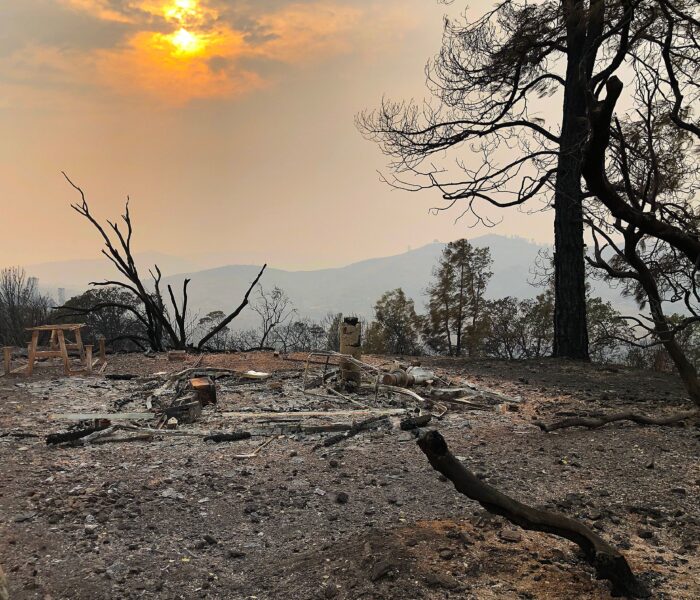
Jannette Bennett
“When fire swept through the area on August 19th and destroyed the building, it was a heartbreaking loss for the club and for everyone who looks to the night skies for inspiration,” says club president Roland Albers.
Among the club’s losses were two custom-built telescopes, an 18-inch truss-tube Newtonian, and a 17.5-inch aluminum-tube Newtonian. The mirrors broke and aluminum melted in the heat. Club members also found several eyepieces from their premium collection melted in the wreckage. All of the electronics, solar panels, reference materials, finders, collimation tools, filters, and furniture that were in the observatory are gone.
Moving Forward
Despite the loss, the Tri-Valley Stargazers remain hopeful. The fire did not take everything, leaving the observatory’s small dome unscathed. Importantly, the landowners made it out safely, and their home escaped the blaze.

Ron Kane
The Tri-Valley Stargazers plan to rebuild the Hidden Hill Observatory over the next two years, with an estimated cost of roughly $30,000. They plan to build a similar-size building and outfit it with two new scopes. The club has created a GoFundMe page to finance the project, and in just 14 days, they are less than $6,000 from their goal. “I am overwhelmed by the support we've received so far from the community and from fellow stargazers throughout the world,” Albers says.
 3
3













Comments
Paul Yang
September 18, 2020 at 7:08 pm
All firefighters, Thank you very much for your protecting the historically valuable astronomy facility. Now I could have a hope to visit it again.
You must be logged in to post a comment.
Yaron Sheffer
October 13, 2020 at 10:39 am
History is repeating itself...
Check out Arp's paper(!) on the winter 1953-4 fire near mount Wilson. Scientific drama at its best. Publications of the Astronomical Society of the Pacific, vol. 66, p. 52.
https://iopscience.iop.org/article/10.1086/126652/pdf
You must be logged in to post a comment.
Yaron Sheffer
October 13, 2020 at 10:41 am
Unfortunately, note that the pages are out of order in this pdf file: 52, 54, and 53.
You must be logged in to post a comment.
You must be logged in to post a comment.